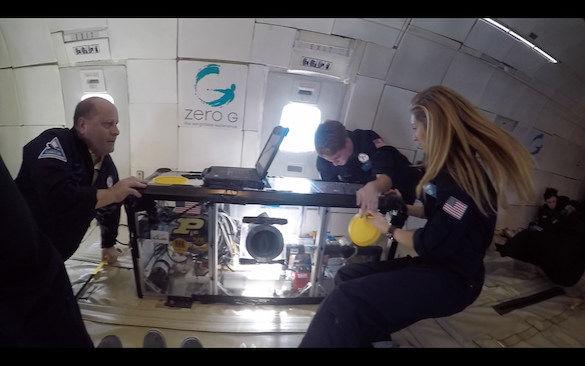Low-Gravity Flow Boiling on Modern Textured Surfaces
PI: Steven Collicott, Purdue University
PI: Steven Collicott, Purdue University

- TA14 Thermal Management Systems
Phase-change heat transfer loops complement heat-pipes, capillary-pumped loops, etc., by surpassing heat-pipe capacity but at the expense of greater complexity. Texture boiling surfaces will be tested on the parabolic flights to document or disprove enhancement of boiling performance as seen in 1-g applications of textured surfaces. If successful this technology will expand the operating range of pumped two-phase heat transfer loops in spaceflight as is being observed on Earth.
Specific flight test objectives are to produce comparisons of low-g flow boiling inception and bubble removal on modern textured surfaces compared to smooth surfaces. The payload is the same as in a previous flight in the NASA student program. The proposed work fills gaps in earlier test results and extends the testing.
The technology is relevant to the low-gravity conditions of spaceflight, including LEO, asteroid, lunar, Martian, and other missions. There are on-Earth applications for the technology, at least one company already markets aqueous foam for blast protection. The use of this technology in spaceflight is, to the best of the proposer’s knowledge, unexplored.
Technology Details
-
Selection DateREDDI-F1-14 (Apr 2015)
-
Program StatusCompleted
- 2 Parabolic
Development Team
-
PISteven Collicott
-
Organization
-
SponsorPurdue University

